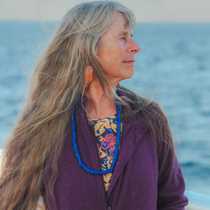Bahia Salinas/El Refugio, Isla del Carmen
The National Geographic Sea Bird spent another peaceful night at anchor in a small bay on the northeast side of Isla del Carmen. The winter winds had changed direction yesterday and were coming from the southwest. The well-protected bay of Salinas was a good anchorage and would provide a great introduction to one of the interesting islands that runs like necklace along the eastern side of the Baja Peninsula.
Bahia Salinas, or Salt Bay, has been settled for hundreds of years. The Jesuits found the bay in 1697 when looking for a well-protected bay to make repairs on the San Jose, the ship they were using to explore the Gulf of California. Immediately, the Jesuits were introduced to the natural salt lagoon just behind the bay and realized an opportunity existed for harvesting and selling a fine grade of sea salt. In the following years the sea salt of Bahia Salinas was exported out of the state of Baja, Sur and around the world.
By the middle 1900’s, between 80 and 100 families lived in Bahia Salinas, largely working in the sea salt harvesting operation. When the Isla del Carmen became part of the Island Biosphere Reserve in the early 1980’s, the Mexican government removed the people who were living and working on the island. This, in effect, left Bahia Salinas in the state of a ghost town. Machinery that had been used in the salt collection was left standing in place along with a small school, several homes, and storage areas. The main office of records for the salt operation and many, many pieces of deserted machinery all remained where they had been left.
The storms and weather of the desert had done its work on much of the community that had not been maintained and created an eerie and unusual place to make a landing. After breakfast, our Zodiacs were available to take everyone ashore to explore this unusual stop. Our group was divided into several groups; the first ashore were the photographers who had an opportunity to explore the crumbling buildings at ground level, finding shadows, rusty machinery, old kitchen items, windows looking through windows, looking through doors out into the salt lagoons behind the bay.
Adding to the feeling of a ghost town were an enormous number of turkey vultures decorating nearly all rooftops, tall poles, and old machinery. The photographers found an old metal roof on top of crumbling adobe with three or four turkey vultures opening their wings to the morning sun, watching us as we wandered throughout the remains of what had once been a thriving community.
Another part of our group wandered the short distance out into the salt lagoon just behind the small set of buildings and the beach. Because of the recent summer storms and rains some of the salt had been washed away, though there were still wonderful salt crystals throughout the lagoon.
All too soon everyone was called back to the beach for our return to the NG Sea Bird. It was the hope of the expedition staff to move to another location for the afternoon on Isla del Carmen and explore just a little more of this island.
Once all guests and staff were back on board, we began a short passage around to the north tip of the island to El Refugio. A small white sand beach, nestled between spectacular eroded rock formations, provided a gorgeous spot for snorkeling and kayaking.
We spent our afternoon exploring salt water washed caves either on the surface by kayak or under the surface watching the ever-changing world just along the edge of the sea! From every vantage point another one of our senses was gifted. Seated in a kayak we could hear the waves washing in the caves. Snorkeling provided that underwater scene of many species of fish making a living in the Gulf. Walking on land, the flower display was spectacular, with an occasional Tarantula wasp, Butterfly or Hummingbird racing past to remind the most observant of us to pause for a moment and enjoy this unusual desert by the sea.



